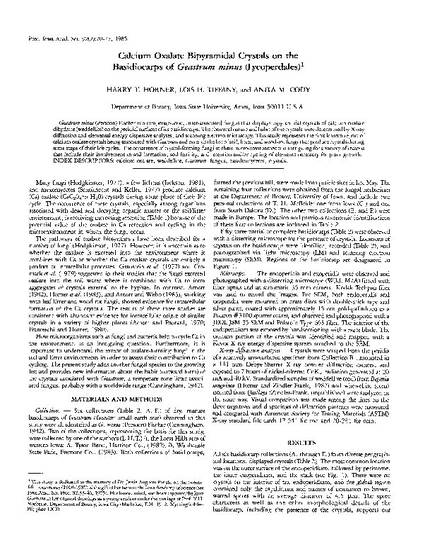
Geastrum minus (Persoon) Fischer is a temperate-zone, litter-associated fungus that displays bipyramidal crystals of calcium oxalate dihydrate (weddellite) on the peridial surfaces of its basidiocarps. The chemical nature and habit of the crystals were determined by X-ray diffraction and elemental energy dispersive analyses, and scanning electron microscopy. This study represents the first known report of calcium oxalate crystals being associated with Geastrum and extends the list of soil, litter, and wood-rot fungi that produce crystals during some stage of their life cycles. The occurrence of crystal-forming fungi in these micro-environments is intriguing for a variety of reasons that include their involvement in soil formation, soil fertility, and retention and/or cycling of elements necessary for plant growth.
Available at: http://works.bepress.com/harry-horner/127/

This article is published as Horner, HT, LH Tiffany, and AM Cody. 1985. Calcium oxalate bipyramidal crystals on the basidiocarps of Geastrum minus (Lycoperdales). Proceedings of the Iowa Academy of Science 92:70-77. Posted with permission.